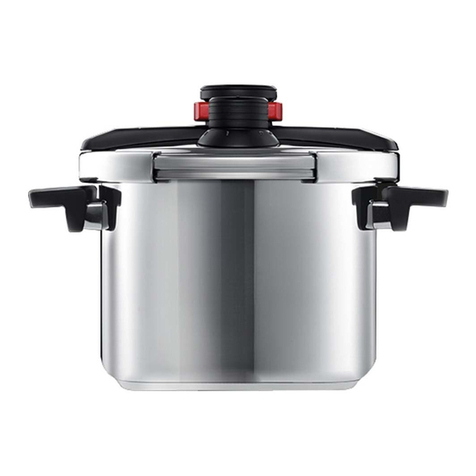GRILLER'S CHOICE G2138M User manual

1
OWNER'S MANUAL
27”GRIDDLE COOKING STATION
Model: G2138M
5023070
Conforms to ANSI Z 21.58-2018/
Certified to CSA 1.6-2018 Outdoor
Cooking Gas Appliances

2
R
R
WARNING! Read the entire manual including all
warnings prior to assembly and use of your griddle
for your safety!
Failure to read all warnings, follow instructions in this manual
and operate per the manual can result in a hazardous situation
that can (a) cause severe injury or death, (b) result in or
cause a fire or result in an explosion causing damage to
property.
DANGER
Indicates an immediate hazardous situation that can result in serious
injury, death and/or damage to property.
•This appliance is for outdoor use only. Do NOT operate in a garage, carport or
any enclosed area. This appliance should NOT be used in or on recreational
vehicles or boats.
•Never operate this appliance within 10 feet of any structure or combustible
material.
•Do NOT store or use gasoline or other flammable liquids or vapors in the
vicinity of this or any other appliance. Never store an LP (liquid propane)
cylinder not connected for use within 20 feet of this appliance.
•Never operate this appliance within 20 feet of any flammable liquid.
•Always check for leaks as detailed in this manual prior to using appliance
•If you smell gas:
oShut off gas to appliance
oExtinguish any open flame
oVentilate the area
oCheck for leaks as detailed in this manual
oIf odor continues, keep away from the appliance and immediately call your
gas supplier or your fire department
•Never operate this appliance unattended. Always keep children and pets away from
the appliance at all times.
•Never use the appliance as a heater.
•Improper installation, adjustment, alteration, service or maintenance can cause
injury or property damage.
•Read the installation, operation and maintenance instructions thoroughly prior
to installing or servicing this appliance.

3
•Keep a type BC or ABC fire extinguisher readily available.
•Keep this manual for future reference.
WARNING
Indicates the possibility of serious bodily injury and/or property damage
if the instructions are not followed
•It is the consumer’s responsibility to read and follow this owner’s manual to
ensure safe use of the appliance.
•It is the consumer’s responsibility to ensure the appliance is properly
assembled, installed, and maintained. Failure to follow the instructions in
this manual could result in serious injury, death and/or property damage.
•Read all instructions prior to assembly and while using the appliance
•The manufacturer has made every effort to eliminate any sharp edges; however,
you should take care when handling assembly components to prevent accidental
injury.
•When the appliance is NOT in use, turn the controls and the gas source off.
•During and after use of this appliance, the appliance will be hot and great care
should be used to prevent injury. Never handle hot parts with unprotected
hands.
•A clogged burner tube can lead to a fire beneath the appliance.
•For residential use only. Do NOT use for commercial cooking.
•Do NOT use Citrisol, abrasive cleaners, de-greasers or a concentrated cleaner on
plastic parts.
•This griddle is for use with liquid propane (LP) gas only. Conversion to or
attempted use of natural gas or any other fuel is dangerous and may cause bodily
harm and will void your warranty.
•Apartments/Condos/Patios –Check with management to learn the requirements and
fire codes for using a LP gas appliance. If allowed, use outside on the ground
floor with a 10 foot clearance from any structure. Do NOT use on or under
balconies.
•LP gas cylinders must be stored outdoors, out of reach of children, and must not
be stored in a building, garage or any other enclosed area. Your cylinder must
never be stored where temperatures can reach over 125°F.
•Do NOT insert any tool or foreign object into the valve outlet or safety relief
valve.
•When griddle is not in use, the LP gas must be turned off at the cylinder and
disconnected.
•Always check connects and cylinder for leaks each time the appliance is used.
Follow leak testing procedure in this manual.
•Do NOT operate if a gas leak is present. Gas leaks may cause a fire or

4
explosion.
•Minimum clearance from sides and back of appliance to combustible construction
is 40 inches. Do NOT use this appliance under any type of overhang or roof.
•It is essential to keep the appliance’s valve compartment, burners and
circulating air passages clean.
•Inspect the appliance prior to EACH use.
•Do NOT alter the appliance in any manner. Any alteration will void your
warranty.
•Do NOT use the appliance unless it is COMPLETELY assembled, and all parts are
securely fastened and tightened.
•Do NOT build this model of appliance in any built-in or slide-in construction.
Ignoring this warning could cause a fire or an explosion that can damage
property and cause serious bodily injury or death.
•Clean and inspect the hose before each use of the appliance. If there is
evidence of abrasion, wear, cuts or leaks, the hose must be replaced prior to
operation.
•Use only the regulator and hose assembly provided. Use only the replacement
regulator and hose assembly specified in this manual.
•Use only Grillers Choice factory-authorized parts. The use of any part that is
not factory-authorized can be dangerous and will void your warranty.
•Do NOT touch metal parts of appliance until they have completely cooled to avoid
burns.
•Do NOT use appliance in high winds.
•Do NOT leave appliance unattended while preheating or burning off food residue
on high.
•Storage of the appliance indoors is permissible ONLY if the cylinder is
disconnected, removed from the appliance and properly stored outdoors.
•Do NOT attempt to disconnect the gas regulator from the cylinder or any gas
fitting while the appliance is in use.
•Always place your griddle on a hard, non-combustible, level surface.
CALIFORNIA PROPOSITION 65 WARNING
This appliance can expose you to chemicals, including carbon monoxide, soot, lead and
lead components which are known to the State of California to cause cancer, birth
defects, and other reproductive harm. For more information go to
www.P65Warnings.ca.gov .
Wash your hands after using this appliance.

5
PRECAUTIONS
1. Leak test all connections after each tank refill.
2. Never check for leaks with a match or open flame.
3. Do not store gasoline or other flammable vapors and liquids in the vicinity of this or any
other appliance.
4. Any LP cylinder not connected for use shall not be stored in the vicinity of this or any other
appliance.
5. Do not store a spare LP-gas cylinder under or near this appliance.
6. Never fill the cylinder beyond 80 percent full.
7. Griddle installation must conform with local codes, or in the absence of local codes, with either
the National Fuel Gas Code, ANSI Z223. 1/ NFPA 54, or Propane Storage and Handling Code,
B149.2,or the Standard for Recreational Vehicles, ANSI A 119.2/NFPA 1192 and CSA Z240 RV
Series, Recreational Vehicle Code, as applicable.

6
TABLE OF CONTENTS
Page
For Your Safety
…………………………………
.. 2-5
LP Tank Information
……………………………
.. 7-8
Connecting Regulator to the LP Tank
……
....... 9
Leak Testing, Valves, Hoses and Regulator
…
. 10-11
Lighting the Appliance ………………………….. 12
Cleaning and Care
………………………………
13-16
Parts List
…………………………………………
. 17-18
Illustrated Parts List
……………………………
.. 19-21
Assembly Instructions
…………………………
.. 22-27
Trouble Shooting
………………………………
... 28-29
Warranty Information
……………………………
30
Frequently Asked Questions …………………… 31

7
LP Tank Information
CAN/CSA-B339, tanks, spheres and
tubes for Transportation of dangerous
goods. Transport Canada (TC). See LP
Tank collar for marking.
LP Tank valve must have:
•Type 1 outlet compatible with regulator or grill.
•Safety relief valve.
•UL listed Overfill Protection
Device(OPD). This OPD safety feature
is identified by a unique triangular
hand wheel. Use only LP Tanks
equipped with this type of valve.
•LP Tank must be arranged for vapor
withdrawal and include collar to
protect LP Tank valve. Always keep LP
Tanks in upright position during use,
transit or storage.
•LP Tank in upright position for vapor
withdrawal.
LP Tank Removal, Transport and Storage LP Tank Valve
Turn OFF all control knobs and LP tank valve.
Turn coupling nut counterclockwise by hand only
-do not use tools to disconnect.
Safety Cap
Lift LP tank wire upward off of LP tank collar,
then lift LP tank up and off of support bracket.
Install safety capon to LP tank valve.
Always use cap and strap supplied with valve. Retainer Strap
Failure to use safety cap as directed may result
in serious personal injury and/or property
damage.
Store outdoors.
DANGER
NEVER store a spare LP cylinder under or near the
appliance or in an enclosed area.
•Never fill a cylinder beyond 80% full.
•If the information in the two points above is not
followed exactly, a fire causing death or serious
injury may occur.
•An over filled or improperly stored cylinder is a
hazard due to possible gas release from the safety
relief valve. This could cause an intense fire with
risk of property damage, serious injury or death.
•If you see, smell or hear gas escaping, immediately
get away from the LP cylinder and appliance and
call your fire department.
20 lb

8
LP Tank
• The LP tank used with your grill must meet the following requirements:
•LP Tanks must be constructed and marked in accordance with specifications for LP tanks of the
U.S. Department of Transportation (DOT) or for Canada.
• A disconnected LP tank in storage or being transported must have a safety cap installed (as shown).
Do not store an LP tank in enclosed spaces such as a carport, garage, porch, covered patio or other
building. Never leave an LP tank inside a vehicle which may become overheated by the sun.
• Do not store an LP tank in an area where children play.
LP (Liquefied Propane Gas)
•LP gas is nontoxic, odor less and colorless when produced.
•For Your Safety, LP gas has been given an odor (similar to rotten cabbage)so that it can be
smelled.
•LP gas is highly flammable and may ignite unexpectedly when mixed with air.
•Static electricity and/or electronics (including phones) of any type can ignite LP and cause a
fire and/or explosion
LP Tank Filling
•Use only licensed and experienced dealers.
•LP dealer must purge new tank before filling.
•Dealer should NEVER fill LP Tank morethan80%of LP Tank volume. Volume of propane in tank will
vary by temperature.
•A frosty regulator indicates gas over fill. Immediately close LP Tank valve and call local LP gas
dealer for assistance.
•Do not release liquid propane(LP) gas into the atmosphere. This is a hazardous practice.
• To remove gas from LP Tank, contact an LP dealer or call a local fire department for assistance.
Check the telephone directory under "Gas Companies"for nearest certified LP dealers.
LP Tank Exchange
•Many retailers offer you the option of replacing your empty LP tank through an exchange service. Use
only those reputable exchange companies that inspect, precision fill, test and certify their tanks.
Exchange your tank only for an OPD safety feature-equipped tank as described in the "LP
Tank"section of this manual.
•Always keep new and exchanged LP tanks in upright position during use, transit or storage.
•Leak test new and exchanged LP tanks BEFORE connecting to grill.
•Place dust cap on cylinder valve outlet whenever the cylinder is not in use. Only install the type of dust
cap on the cylinder valve outlet that is provided with the cylinder valve. Other types of caps or plugs
may result in leakage of propane.

9
Connecting Regulator to the LP Tank
1.
LP tank must be properly secured onto griddle. (Refer to assembly section.)
2.
Turn all control knobs to the OFF position.
3.
Turn LP tanks OFF by turning OPD hand wheel clockwise to a full stop.
4.
Remove the protective cap from LP tank valve. Always use cap and strap supplied with valve.
5.
Hold regulator and insert nipple into LP tank valve.
6.
Hand-tighten the coupling nut, holding regulator in a straight line with LP tank valve so as not to cross
thread the connection.
7.
Turn the coupling nut clockwise and tighten to a full stop. The regulator will seal on the back-check
feature in the LP tank valve, resulting in some resistance. An additional one-half to three-quarterS
turn IS required to complete the connection. Tighten by hand only-do not use tools.
NOTE:
If you cannot complete the connection, disconnect regulator and repeat steps 6 and 7. If you
are still unable to complete the connection, do not use this regulator!

10
Leak Testing Valves, Hose and Regulator
•Leak test must be repeated each time LP tank is exchanged or refilled.
•Do not smoke during leak test.
•Do not use an open flame to check for gas leaks.
• Griddle must be leak tested outdoors in a well-ventilated area, away from ignition sources such as gas
fired or electrical appliances (including phones). During leak test, keep griddle away from open flames
or sparks.
•Use a clean paintbrush and a 50/50 mild soap and water solution. Brush soapy solution onto areas
indicated by arrows in figure below. Leaks are indicated by growing bubbles.
Do not use household cleaning agents. Damage to gas valve/hose/regulator components can
result.
Procedure:
1. Turn all griddle control knobs to OFF.
2. Be sure regulator is tightly connected to LP tank.
3. Completely open LP tank valve by turning OPD hand wheel counterclockwise. If you hear a
rushing sound, turn gas off immediately. There is a major leak at the connection.
4. Brush soapy solution onto areas where bubbles are shown in picture above.
5. If “growing” bubbles appear, there is a leak.Close LP tank valve immediately and retighten
connections. If leaks cannot be stopped do not try to repair.
6. Always close LP tank valve after performing leak test by turning hand wheel clockwise.
WARNING
If "growing bubbles” appear do not use or
move the LP tank. Contact an LP gas
supplier or your fire department!

11
Safety Tips
1. Before opening LP cylinder valve, check the coupling nut for tightness.
2. When griddle is not in use, tum off all control knobs and LP cylinder valve.
3. Never move griddle while in operation or still hot.
4. Use Griller’s Choice utensils and oven mitts to avoid burns and splatters.
5. Maximum weight on side shelf is 9 lbs.
6. The grease tray must be inserted into griddle and emptied after each use. Do not remove
grease tray until grill has completely cooled.
7. Clean griddle often, preferably after each cookout. If a bristle brush is used to clean any of the
grill cooking surfaces, ensure no loose bristles remain on cooking surfaces prior to grilling.
8. If you notice grease or other hot material dripping from grill onto valve, hose or regulator,
turn off gas supply at once. Determine the cause, correct it, then clean and inspect valve,
hose and regulator before continuing. Perform a leak test.
9. The regulator may make a humming or whistling noise during operation. This will not affect
safety or use of grill.
10. If you have a griddle problem, see the "Troubleshooting Section"
11. If the regulator frosts, turn off griddle and LP cylinder valve immediately. This indicates a
problem with the cylinder and it should not be used on any product. Return to supplier!
CAUTION
·
Do not use water on a grease fire. Personal injury may result. If
a grease fire develops, turn knobs and LP cylinder off.
•Do not leave grill unattended while
preheating or burning off food residue on HI. If grill has not
been regularly cleaned, a grease fire can occur that may
damage the product.

12
CAUTION
If ignition does NOT occur in 5 seconds, turn the burner
controls OFF, wait 2 minutes and repeat the lighting
procedure. If the burner does not ignite with the valve
open, gas will continue to flow out of the burner and
could accidentally ignite with risk of injury.
Lighting the Appliance
Caution: Read all the steps prior to lighting the appliance to familiarize yourself with the
proper lighting sequence. Do not lean over appliance while lighting.
1. Make sure gas burner control valves on appliance are in the OFF position.
2. Turn on the gas from the LP tank. Wait 5 seconds.
3. To ignite, press and turn the far right gas burner control valve anti-clockwise to MAX
(“large flame”). Hold it in this position. (NOTE: Do NOT turn ALL the gas burner control
valves on at once when lighting the appliance!)
4. If ignition does NOT occur in 5 seconds, turn the gas burner control valve to OFF, wait
2 minutes and repeat step 3 of the lighting procedure. This process allows the LP
propane gas to fill the gas lines from the LP tank to the burner. This is normal
procedure and may have to be repeated a couple of times to allow gas to fill the line.
5. To ignite remaining burners: Start with the burner closest to the ignited burner and follow
step 3 in the lighting procedure (middle burner). Once the middle burner is lit, ignite the
remaining, far left burner following step 3 of the lighting procedure.
6. Once each burner has ignited, turn knobs to desired setting.
Match Lighting Appliance
•Make sure burner control switches are on OFF.
•Connect 20lb cylinder to appliance.
•Remove griddle top (may require two (2) people).
•Use a long lighter and place the flame on the right side of the burner near the burner holes.
•Push in and turn the knob to high.
•Ensures burner lights and stays lit.
Turning Appliance Off
•Turn LP cylinder OFF by turning hand-wheel clockwise to a full stop.
•Turn all knobs to the OFF position.
•Disconnect LP gas tank from appliance.
•Season your appliance per “Seasoning Appliance” section.

13
CAUTION
1. Do NOT clean any appliance part in a self-cleaning oven. Extreme heat
will damage the part and void the warranty.
2. All cleaning and maintenance should be done when the appliance is cool
and with the fuel supply disconnected.
3. Do NOT enlarge valve orifices or burner ports. Modifying any part of the
appliance can cause fires, explosions and/or result in bodily harm, death
and/or property damage and void your warranty.
4. Never use oven cleaner to clean any part of the appliance. Only use mild
dish soap and warm water on any part but griddle top.
5. This appliance should be cleaned and inspected on a regular basis.
Cleaning and Care
General Appliance Cleaning
Clean your appliance on a regular basis and especially after extended periods of storage.
• Ensure that the appliance and its components are cool prior to cleaning.
•Never handle hot parts with unprotected hands.
•In order to extend and maintain the life and condition of your grill, we strongly recommend
• that the unit be covered when left outside for any length of time, especially during the winter months.
• Do not mistake brown or black accumulation of grease and smoke for paint. Interiors of gas grills are
not painted at the factory (and should never be painted). Apply a strong solution of detergent and
water or use a griddle cleaner with scrub brush on insides of griddle lid and bottom. Rinse and allow
to completely air dry. Do not apply a caustic griddle/oven cleaner to painted surfaces.
• Shelves and appliance frame (everywhere BUT griddle top): Wash with warm soapy water and
wipe dry or air dry. Do not use citrisol, abrasive cleaners, degreasers or a concentrated griddle
cleaner on any part. Damage to and failure of parts can result and void your warranty.
What is seasoning your appliance mean?
Seasoning is the preparation of steel or cast-iron cookware for use. There are two reasons for seasoning:
•To coat the griddle top to prevent rust.
•To create a natural, permanent non-stick cooking surface.
Seasoning is an easy and important process to ensure a great cooking experience and help your appliance
last a long time. Unlike synthetically coated appliances, steel and cast iron can be seasoned repeatedly,
constantly restoring the cooking surface. When you season your appliance, you are preventing rust and
providing the griddle top with a natural, permanent non-stick surface.
Note: Seasoning is an ongoing process that takes time and repeated use
before your griddle top develops a shiny, black surface. The more often
you cook on and season your griddle, the more non-stick the surface will
become.

14
Cooking surface (griddle top):
* You will need tongs, paper towels and either vegetable or canola oil for this process.
* IMPORTANTNOTE:
If you use more water than a couple of
tablespoons on a HOT griddle, the
griddle may be damaged and possibly
warp.
• First Use:
1. Light appliance on per ‘Lighting the Appliance’ section.
2. Turn burners to High for 10 minutes until the griddle top starts to discolor.
3. Turn appliance off per ‘Turning Appliance Off’ section.
4. Allow appliance to cool.
5. Wipe off appliance surface with paper towels until towels are clean. Steps 1-5
removes the protective coating we put on the griddle at the factory.
6. Apply a light coat of vegetable or canola oil (approximately 2-3 Tbsp) to griddle
surface.
7. Roll up paper towel and hold with tongs to evenly spread oil across griddle top and
sides (inside and outside). Make sure you cover every area of the metal griddle
including all sides, corners, etc.
8. Turn on appliance per the ‘Lighting the Appliance’ section and turn all burners to high
for 10 minutes. The oil on the griddle surface will smoke which is an indicator the oil is
bonding with the metal of the griddle to result in a stick-resistant surface.
9. When the griddle stops smoking and there is a nice sheen, repeat steps 6-9 about four
times.
10. Notice that the very front of the griddle will not discolor like the rest of the griddle. This
area is still seasoned and can be used as a lower temperature portion of the griddle to
keep food warm. Turning off one burner section can also create a ‘warming’ area for
food.
11. The griddle top will darken over time after resulting in a dark seasoned stick resistant
surface.
12. Follow all procedures to ensure your griddle surface maintains it seasoned cooking
surface over time.

15
After Each Use:
• Turn appliance off per the ‘Turning Appliance Off section.
• While the appliance is still warm, use your Griller’s Choice scraper to scrap off any
excess food residue. You can use a small amount of water (a couple of tablespoons) to
help remove debris and food residue. NOTE: If you use more water than a couple of
tablespoons on a HOT griddle, the griddle may be damaged and possibly warp.
• Wipe down the griddle surface and griddle sides (inside and outside) with paper towels
until clean. Repeat process until the griddle top is clean.
• Apply a light coat of vegetable or canola oil to griddle surface and walls and wipe with
paper towel. Ensure all metal surfaces of the griddle surface are coated lightly and
evenly with oil.
Removal of Stubborn Food Residue:
• Follow the procedure for the ‘After Each Use’ section.
• Light appliance per ‘Lighting Appliance’ section.
• Apply vegetable or canola oil to griddle surface.
• Allow oil to burn food residue off.
• Add additional oil if necessary and allow to burn off.
• If necessary, use a Griller’s Choice cleaning stone and scrub the food residue off.
• Re-season the griddle surface.
Refurbishing the Griddle Surface:
• Light appliance per the ‘Lighting Appliance’ section.
• Turn control knobs to high for 10 minutes.
• Turn appliance off.
• While the appliance is still warm, use your Griller’s Choice scraper to remove as much
food and rust as possible on all griddle surfaces (top, sides).
• Apply a liberal amount of vegetable or canola oil on surface and use your Griller’s Choice
cleaning stone to remove rust and food residue. Add additional oil if necessary.
• Wipe with paper towels until towels are clean. Repeat above steps until all rust and food
residue have been removed.
• Apply oil to all griddle surface areas with paper towels to coat al metal surfaces (top and
sides).
• Follow ‘First Use’ seasoning section. Repeat 3-5 times.

16
Cleaning Burners
1. Turn LP gas off.
2. Turn all control knobs on front panel to off.
3. Disconnect the LP gas tank from the appliance.
4. Remove griddle top. Griddle top is heavy and will require two (2) people to remove. Just lift
it off and set it to the side.
5. Remove burner by removing the fastener which secures the burner to the back panel.
6. Lift burner up and away from the gas valve orifice.
7. Clean venturi of each burner with small bottle brush (not a wire brush) or a lightweight coat
hanger (see diagram below for bending and making a burner cleaning hook) or compressed
air (if you use compressed air, wear goggles to protect your eyes). Do several times to
make sure all debris is removed.
8. Remove all dirt and residue from the burner surface.
9. Clean any clogged pores with a stiff wire (open paper clip works well).
10. Inspect burners for any damage like cracks or holes. If damage is found, replace with
manufacturer supplied parts.
11. Re-install burner(s). Make sure the gas valve orifice is correctly positioned inside each
burner/venturi tube. Also, check position of spark electrode.
12. Replace griddle top
13. Follow ‘Lighting Appliance’ section including performing a leak test per the ‘Leaks Testing’
section.
Storing Your Appliance
•Close LP gas tank valve.
•Turn all control knobs to OFF.
•Disconnect LP gas tank from appliance. Do NOT store LP gas tank indoors. Appliance can
be stored indoors if not connected to LP gas tank.
•Store in dry location. Use cover to keep appliance dry if not storing indoors.
•When an LP cylinder is connected to appliance, store outdoors in a well-ventilated space
and out of reach of children.
•Cover griddle if stored outdoors.
•When removing griddle from storage, follow “Cleaning the Burner Assembly” instructions
before starting griddle.

17
PARTS LIST
No. Part Name QTY.
1 Tray cover 1
2 Griddle Plate 1
3 Body 1
4 Front Frame Crossbar 1
5 Back Frame Crossbar 1
6 Side Table 2
7 M4*35 Flange Bolts 12
8 M6*50 Flange Bolts 8
9 Right leg 2
10 M6*70 Flange Bolts 12
11 Oil Tank Support 1
12 Wheel 2
13 R Pin 2
14 Axle 1
15 M6*35 Flange Bolts 4
16 lower Fastener 1
17 Knob 4
18 Upper Hanger Mounting Bracket 1
19 M6 Flange Nut 6
20 Middle Plate 1
21 Rubber Foot 4
22 Upper Hanger 1
23 Oil Cup 1

18
24 Left Leg 2
25 M4*8 Screw 4
26 Hook 1
27 M4 Hex Nut 4
28 Lid Handle 1
29 Left Front Leg 1
30 Guide Oil Group 1
31 Buckles 1
32 Bottom Tray 1

19
ILLUSTRATED PARTS LIST

20
Table of contents
Popular Cooking Equipment manuals by other brands

Electrolux Professional
Electrolux Professional thermaline ProThermetic PBOT steam Installation and operating manual
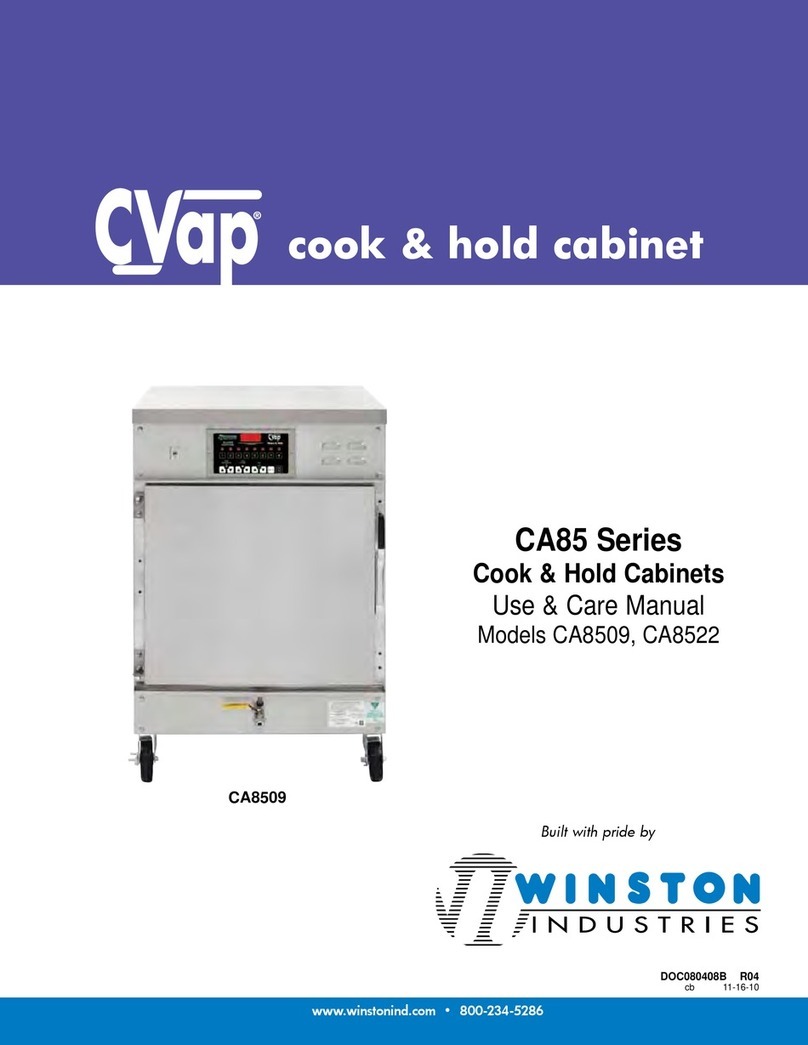
Winston Industries
Winston Industries CVap CA85 Series Use & care manual

Cook's Companion
Cook's Companion 4 Piece Loaf Pan Set quick start guide
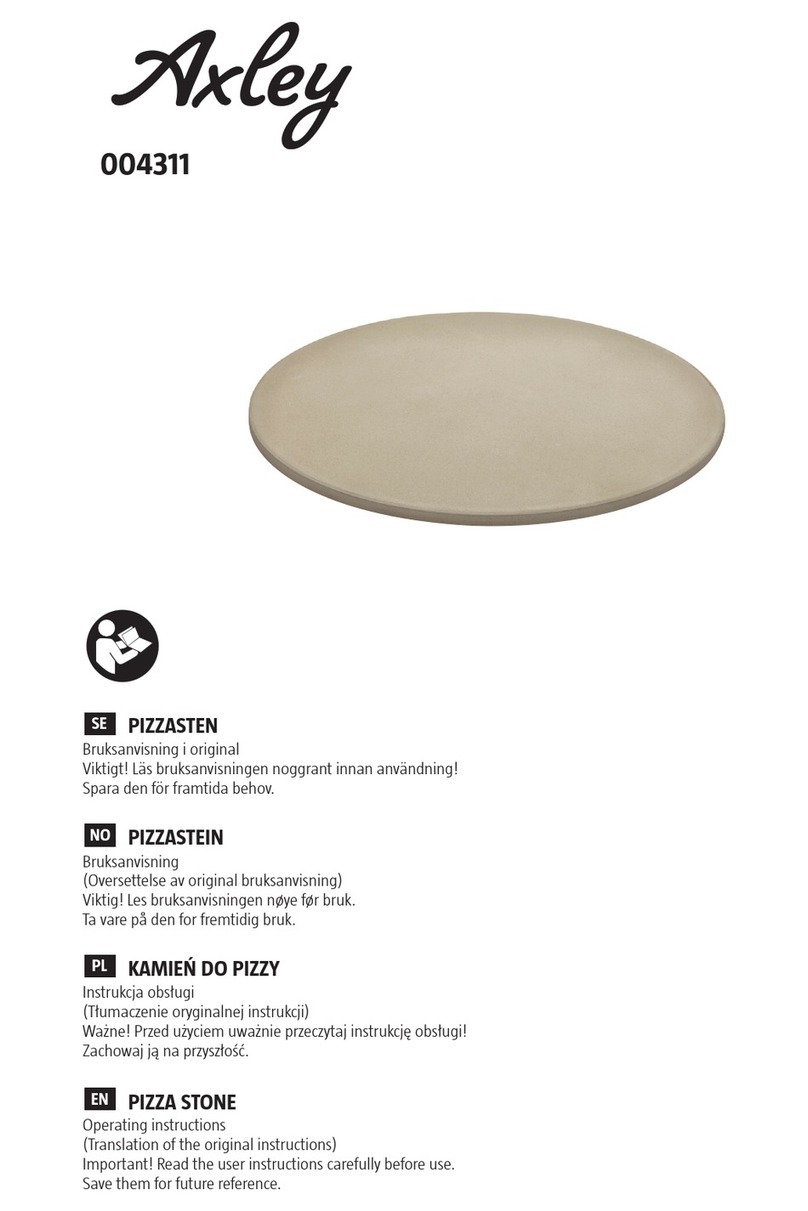
Axley
Axley 004311 operating instructions
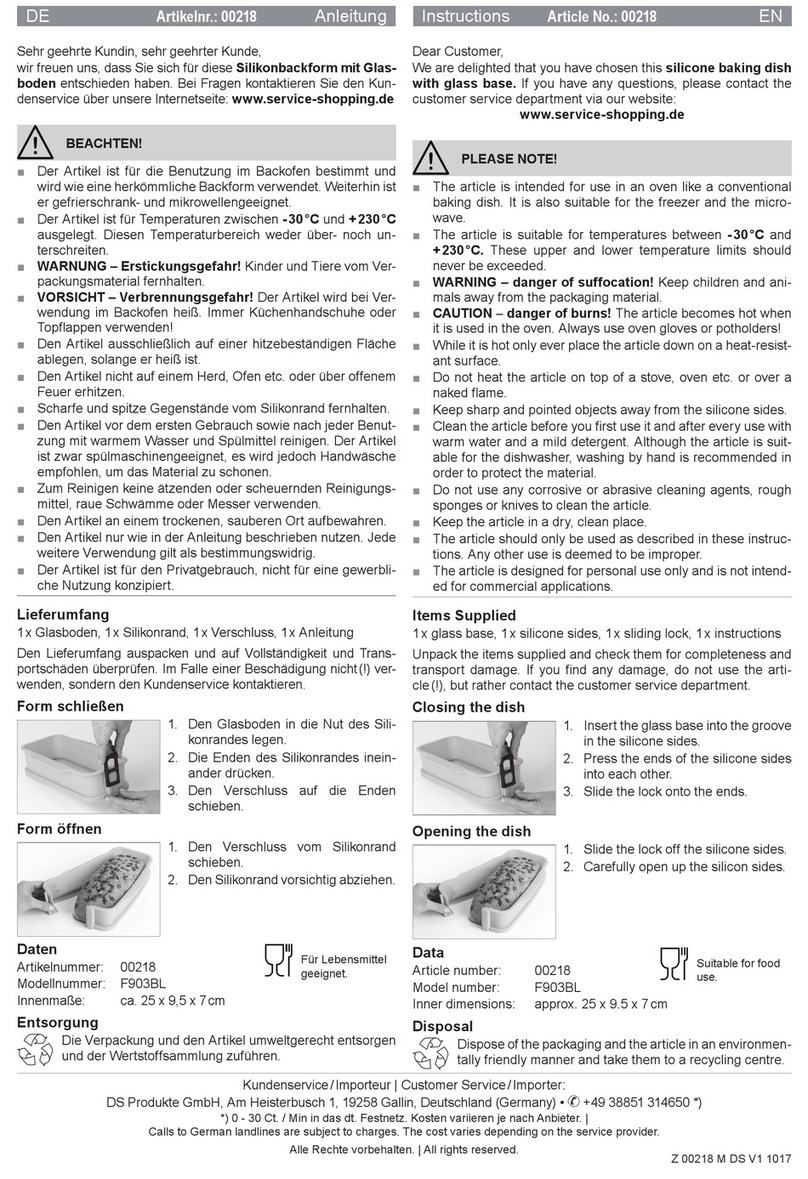
DS Produkte
DS Produkte F903BL instructions
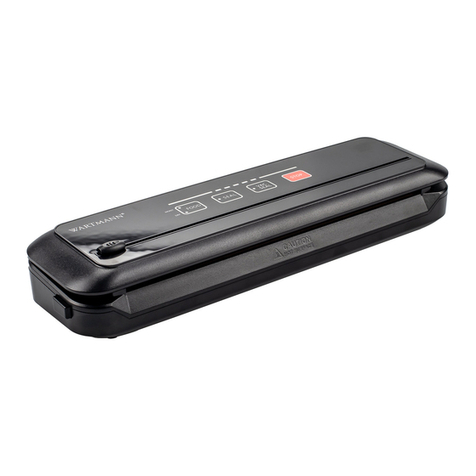
Wartmann
Wartmann WM-2005 EC user manual
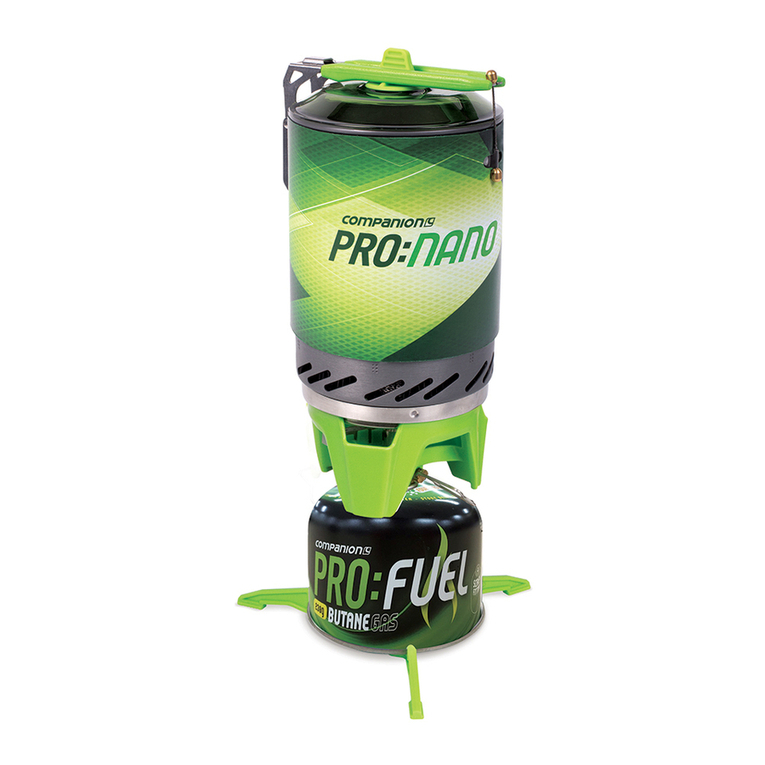
COMPANION
COMPANION Pro:nano X2 quick guide

Firex
Firex BETTERPAN UDBRG A V1 Series Installation and operation manual
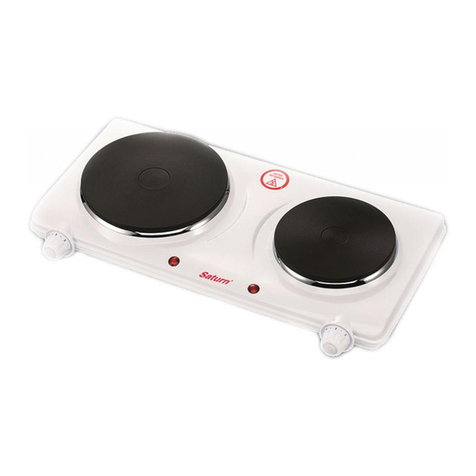
Saturn
Saturn ST-EC0181 quick start guide

Backyard Pro
Backyard Pro Butcher Series instruction manual
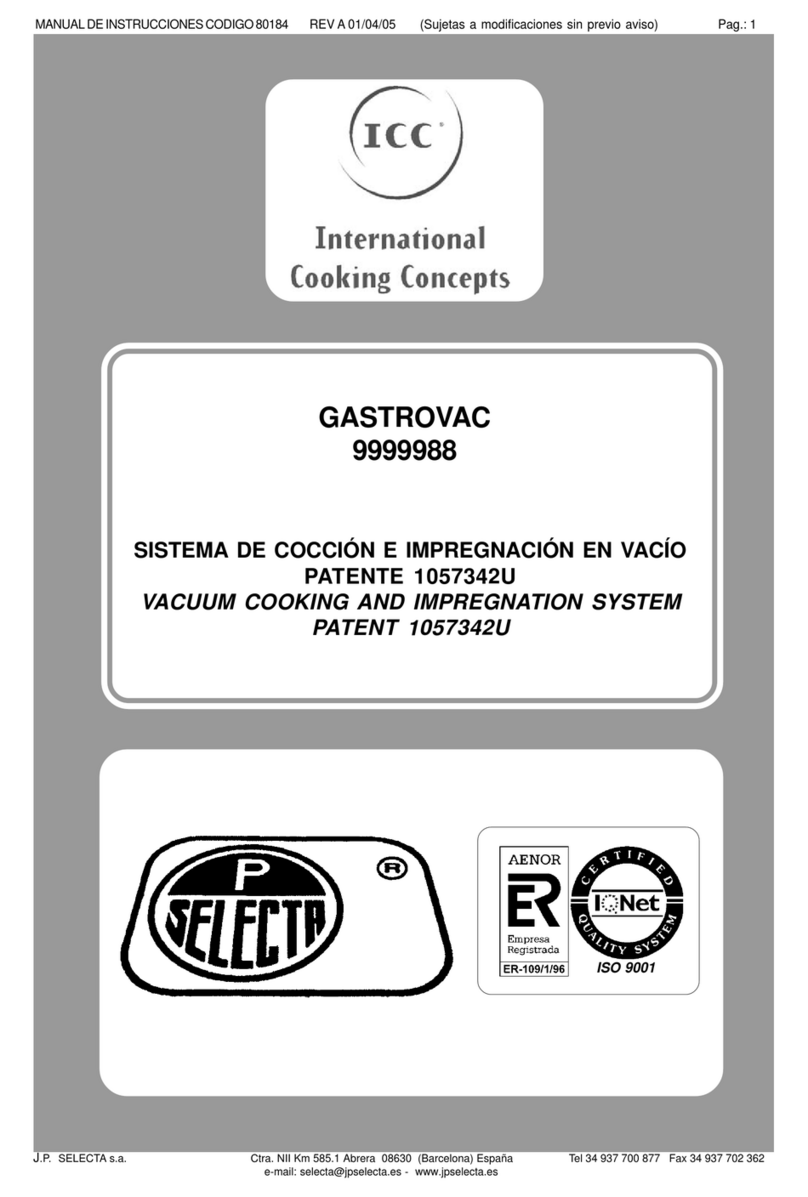
J.P. SELECTA
J.P. SELECTA GASTROVAC 9999988 manual

BLACK DECKER
BLACK DECKER FP5500BC manual
